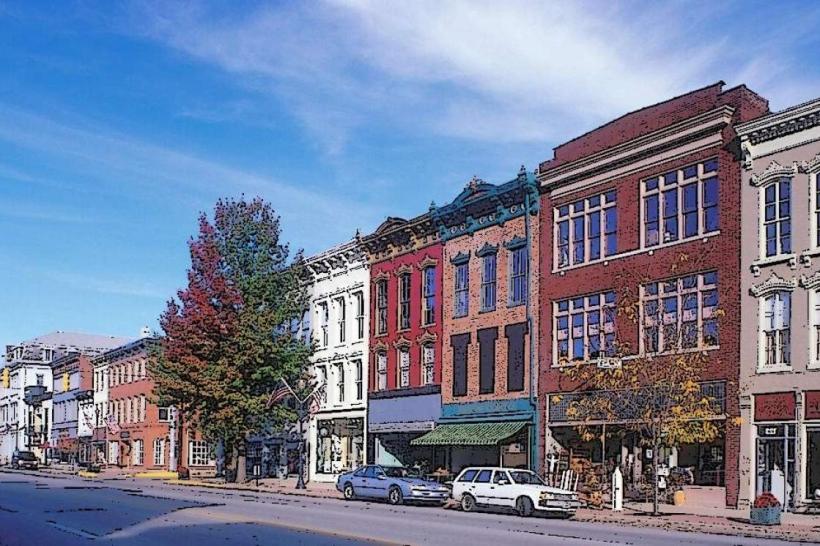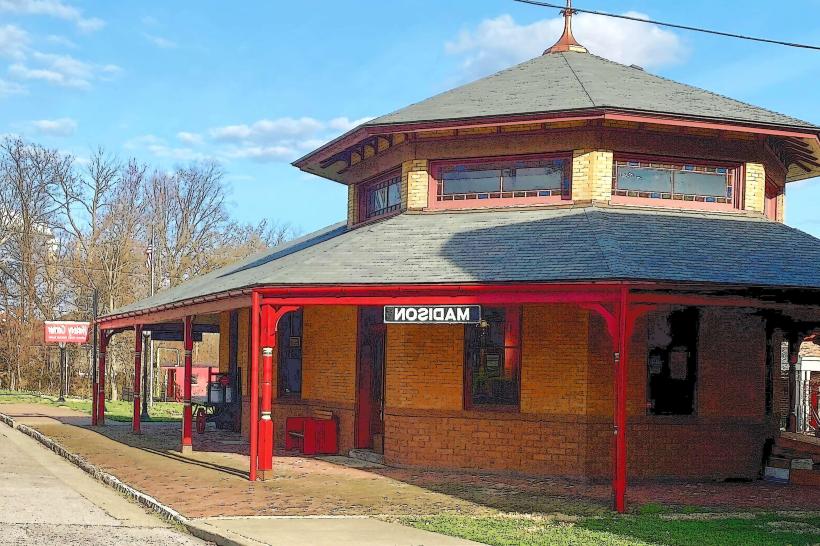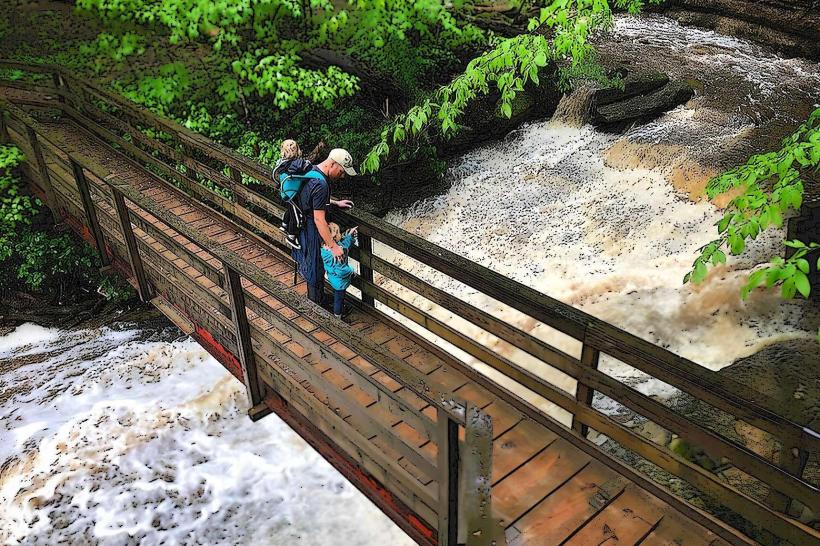Information
Landmark: Old Jeffersonville Historic DistrictCity: Madison
Country: USA Indiana
Continent: North America
Old Jeffersonville Historic District, Madison, USA Indiana, North America
The Old Jeffersonville Historic District, located in downtown Jeffersonville, Indiana, is a historically rich and architecturally diverse area spanning roughly 203 acres. Recognized on the National Register of Historic Places since 1987, the district encompasses over 500 contributing buildings and structures that collectively reflect the city’s evolution from the mid-19th century through the early 20th century. This district vividly illustrates Jeffersonville’s growth as a vital river port, industrial center, and residential community.
Historical Background
Jeffersonville’s strategic location on the Ohio River made it a key hub for commerce, shipbuilding, and transportation beginning in the early 1800s. The historic district developed as the city expanded westward from the riverfront, with neighborhoods emerging around river-related industries, railroads, and commercial activities. The district’s buildings and streetscapes document the city’s transition from a frontier settlement into a thriving industrial and cultural center by the early 20th century.
Architectural Styles and Significant Structures
The district features a broad array of architectural styles, showcasing the tastes and socioeconomic trends spanning over 100 years:
Federal and Greek Revival Styles: Among the oldest buildings in the district is the Grisamore House (circa 1837), an elegant Federal-style double brick house with Greek Revival influences. The house is historically significant for hosting notable visitors, including a campaign speech by President William Henry Harrison in 1840.
Victorian-Era Homes: The district includes many finely crafted late 19th-century residences displaying Italianate, Queen Anne, and Second Empire elements. These homes often feature ornate woodwork, decorative brackets, tall windows, and varied rooflines.
Craftsman and Bungalow Styles: Early 20th-century homes and modest working-class dwellings such as American Foursquare and bungalow styles are also well represented, reflecting the city’s growing industrial workforce.
Civic and Commercial Architecture: Noteworthy public buildings include the Old Masonic Temple, known for its grand marble staircase and classical design, and the Warder Park Carnegie Library, an early 20th-century public library funded by philanthropist Andrew Carnegie. The district’s commercial buildings, often two- to three-story brick structures, reflect typical river town storefronts with large display windows and decorative cornices.
Transportation-Related Structures: The Spring Street Freight House (built in 1925 in Craftsman style) highlights Jeffersonville’s role in rail transportation and goods movement. The nearby Ohio River docks and shipyards contributed heavily to the city’s economy.
Cultural and Historic Landmarks
Schimpff’s Confectionery: Founded in 1891 and still family-operated, Schimpff’s is both a beloved candy shop and a candy museum. It is famous for its handmade sweets like red-hots and Modjelskas, caramel-covered marshmallows named after a local candy maker. Visitors can watch traditional candy-making demonstrations and explore the museum’s exhibits on confectionery history.
Howard Steamboat Museum: This museum occupies the historic mansion of Edmonds J. Howard, founder of the Howard Shipyards, which built steamboats during Jeffersonville’s heyday as a river port. The museum contains extensive collections of ship models, photographs, artifacts, and documents chronicling the city’s steamboat industry and its impact on regional commerce.
Neighborhood and Streetscape
The district’s Riverside Drive is one of Indiana’s rare residential streets overlooking a major river. Here, stately homes stand along the Ohio River, offering picturesque views and reflecting the wealth generated by the river trade. The neighborhood presents a charming mix of architectural styles and periods, ranging from grand mansions to modest shotgun houses, creating a layered historical streetscape.
Recreation and Connectivity
Big Four Bridge: Adjacent to the district, this former railroad bridge was converted into a pedestrian and bicycle bridge connecting Jeffersonville to Louisville, Kentucky. The bridge is a major recreational and cultural asset, offering stunning views of the river and city skylines.
Clark County Museum: Located nearby, this museum offers exhibits on local Native American history, early settlement, and the development of Jeffersonville and surrounding areas.
Community Events and Atmosphere
Old Jeffersonville remains a lively area hosting seasonal events that celebrate its heritage:
Farmers’ Market: During warmer months, the market offers local produce, artisan crafts, and community engagement opportunities.
Summer Concert Series: Outdoor concerts held in the district foster a vibrant atmosphere, drawing residents and visitors to enjoy live music amid historic surroundings.
The district balances preservation with contemporary life, maintaining active residences, shops, restaurants, and cultural venues that contribute to its unique character.
Preservation and Importance
The Old Jeffersonville Historic District is a key example of a Midwestern river town whose architecture and urban form document the social, economic, and technological changes of the 19th and early 20th centuries. Its buildings tell stories of industrial growth, river commerce, and everyday life, while landmarks like Schimpff’s and the Howard Steamboat Museum preserve specialized aspects of local culture.
As a protected historic district, efforts continue to maintain its architectural integrity and promote heritage tourism, contributing to Jeffersonville’s economic vitality and community pride.
Summary
The Old Jeffersonville Historic District offers a comprehensive and immersive experience into Indiana’s river town heritage through its well-preserved buildings, cultural institutions, and active community life. Visitors gain insight into architectural trends, industrial history, and the everyday stories of those who shaped the city. It remains a vibrant and essential piece of Indiana’s historic fabric.





